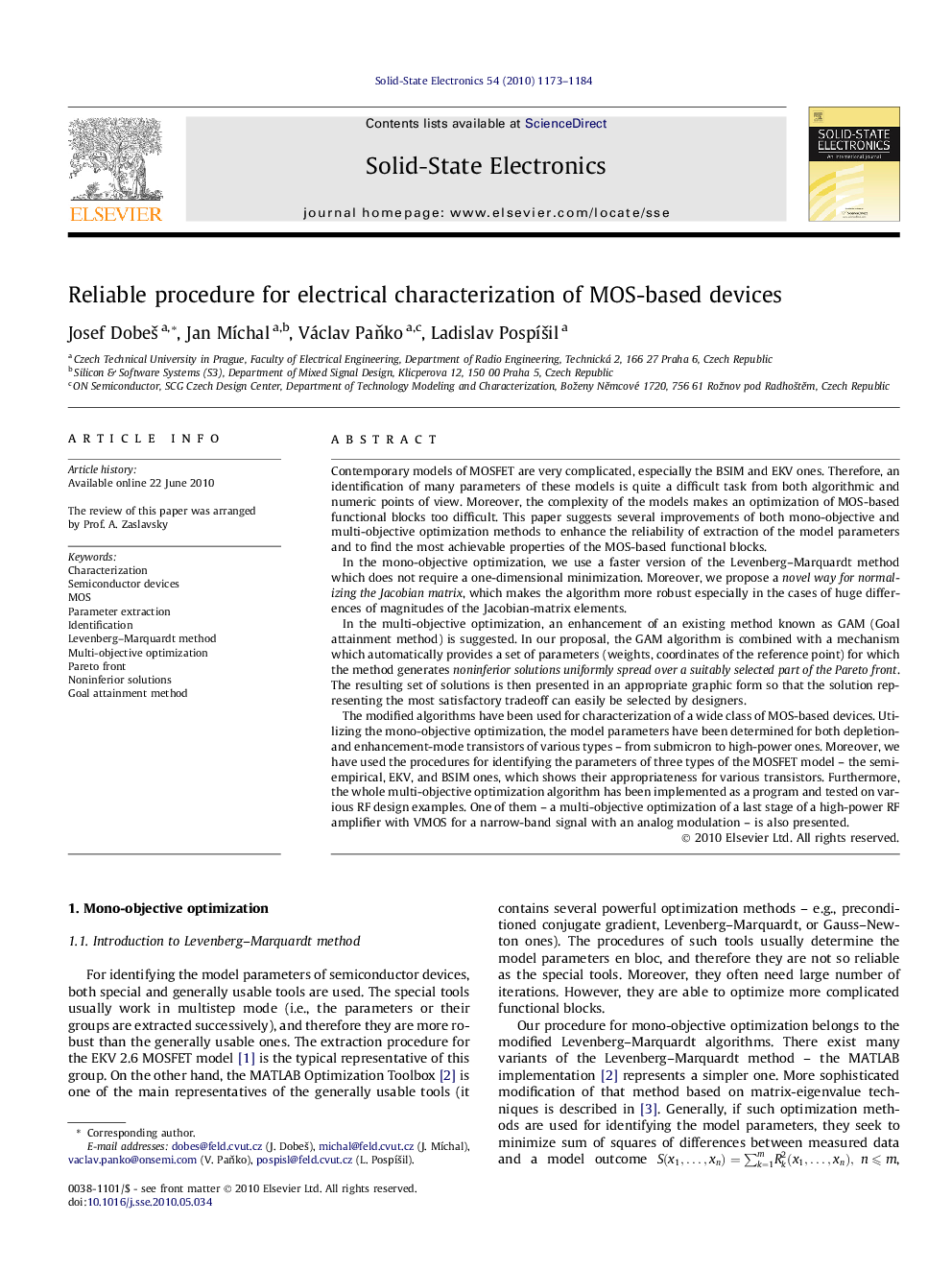| Article ID | Journal | Published Year | Pages | File Type |
|---|---|---|---|---|
| 748978 | Solid-State Electronics | 2010 | 12 Pages |
Contemporary models of MOSFET are very complicated, especially the BSIM and EKV ones. Therefore, an identification of many parameters of these models is quite a difficult task from both algorithmic and numeric points of view. Moreover, the complexity of the models makes an optimization of MOS-based functional blocks too difficult. This paper suggests several improvements of both mono-objective and multi-objective optimization methods to enhance the reliability of extraction of the model parameters and to find the most achievable properties of the MOS-based functional blocks.In the mono-objective optimization, we use a faster version of the Levenberg–Marquardt method which does not require a one-dimensional minimization. Moreover, we propose a novel way for normalizing the Jacobian matrix, which makes the algorithm more robust especially in the cases of huge differences of magnitudes of the Jacobian-matrix elements.In the multi-objective optimization, an enhancement of an existing method known as GAM (Goal attainment method) is suggested. In our proposal, the GAM algorithm is combined with a mechanism which automatically provides a set of parameters (weights, coordinates of the reference point) for which the method generates noninferior solutions uniformly spread over a suitably selected part of the Pareto front. The resulting set of solutions is then presented in an appropriate graphic form so that the solution representing the most satisfactory tradeoff can easily be selected by designers.The modified algorithms have been used for characterization of a wide class of MOS-based devices. Utilizing the mono-objective optimization, the model parameters have been determined for both depletion- and enhancement-mode transistors of various types – from submicron to high-power ones. Moreover, we have used the procedures for identifying the parameters of three types of the MOSFET model – the semiempirical, EKV, and BSIM ones, which shows their appropriateness for various transistors. Furthermore, the whole multi-objective optimization algorithm has been implemented as a program and tested on various RF design examples. One of them – a multi-objective optimization of a last stage of a high-power RF amplifier with VMOS for a narrow-band signal with an analog modulation – is also presented.
